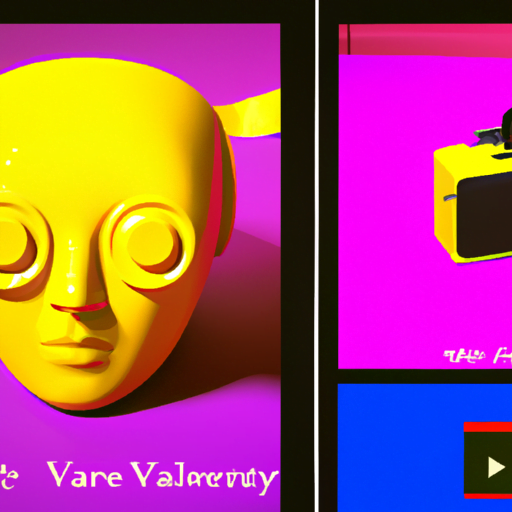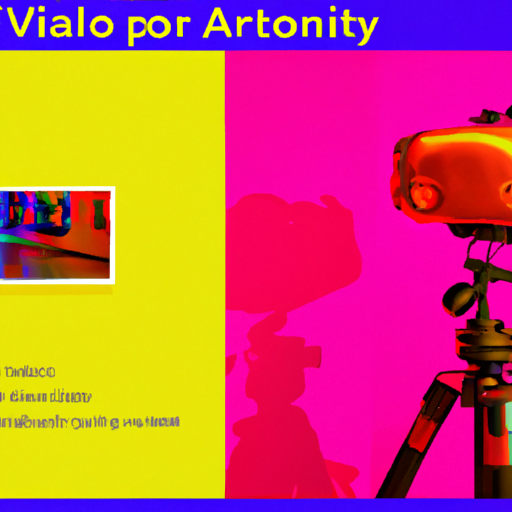
-
Table of Contents
Virtual Reality for Design Collaboration and Presentation

Virtual reality (VR) has revolutionized various industries, and one area where it has made a significant impact is design collaboration and presentation. With the ability to create immersive and interactive experiences, VR has transformed the way designers collaborate, present their work, and engage with clients. In this article, we will explore the benefits of using virtual reality for design collaboration and presentation, examine real-world examples and case studies, and discuss the future potential of this technology.
The Benefits of Virtual Reality for Design Collaboration
Design collaboration is an essential aspect of any creative process, and virtual reality offers several advantages over traditional methods. Here are some key benefits:
- Enhanced Communication: VR allows designers to communicate their ideas more effectively by providing a shared virtual space where team members can interact and collaborate in real-time. This eliminates the need for lengthy email chains or physical meetings, saving time and improving efficiency.
- Improved Visualization: Traditional design collaboration often relies on 2D sketches or 3D models, which can be challenging for clients or team members to fully understand. VR provides a more immersive experience, allowing stakeholders to visualize the design in a realistic and interactive manner. This leads to better feedback and more informed decision-making.
- Remote Collaboration: With VR, designers can collaborate with team members or clients from anywhere in the world. This is particularly beneficial for global teams or when working with clients who are unable to visit the physical location. VR eliminates geographical barriers and enables seamless collaboration regardless of location.
- Iterative Design Process: VR enables designers to quickly iterate and make changes to their designs in real-time. This iterative process allows for rapid prototyping and testing, leading to faster design iterations and ultimately better end results.
Real-World Examples and Case Studies
Several companies and industries have already embraced virtual reality for design collaboration and presentation. Let’s explore some real-world examples:
1. Architecture and Construction
Architects and construction firms have been early adopters of VR technology for design collaboration. For instance, Zaha Hadid Architects, a renowned architectural firm, used VR to collaborate with clients on the design of the Al Wakrah Stadium for the 2022 FIFA World Cup in Qatar. By immersing clients in a virtual environment, they were able to gather feedback and make design decisions more efficiently.
2. Automotive Design
Automotive companies like Ford and Audi have also embraced VR for design collaboration. Ford, for example, uses VR to create virtual prototypes of their vehicles, allowing designers and engineers to collaborate and make design changes before physical prototypes are built. This saves time and reduces costs associated with physical prototyping.
3. Interior Design
Interior designers are leveraging VR to provide clients with immersive experiences of their proposed designs. Firms like Decorilla use VR to create virtual walkthroughs of spaces, allowing clients to visualize the design and make informed decisions. This has proven to be a powerful tool for client engagement and satisfaction.
The Future Potential of Virtual Reality in Design Collaboration
As virtual reality technology continues to advance, the potential for design collaboration and presentation is only expected to grow. Here are some future possibilities:
- Virtual Meetings: VR has the potential to revolutionize remote meetings by providing a more immersive and engaging experience. Instead of video calls, participants can meet in a virtual space, enhancing communication and collaboration.
- Real-Time Collaboration: With advancements in VR technology, designers will be able to collaborate in real-time, making changes and discussing ideas within the virtual environment. This will further streamline the design process and improve efficiency.
- Integration with Artificial Intelligence: The integration of AI with VR can enhance design collaboration by providing intelligent suggestions and automating repetitive tasks. AI algorithms can analyze design data and provide valuable insights, helping designers make informed decisions.
- Virtual Showrooms: VR can create virtual showrooms where clients can explore and interact with products or designs. This can be particularly useful for industries like furniture or fashion, where physical showrooms may be limited in space or availability.
Summary
Virtual reality has transformed design collaboration and presentation by providing enhanced communication, improved visualization, remote collaboration, and an iterative design process. Real-world examples in architecture, automotive design, and interior design demonstrate the effectiveness of VR in these industries. As technology continues to advance, the future potential of VR in design collaboration includes virtual meetings, real-time collaboration, integration with AI, and virtual showrooms. Embracing virtual reality in design collaboration and presentation can lead to more efficient workflows, better client engagement, and ultimately superior design outcomes.
